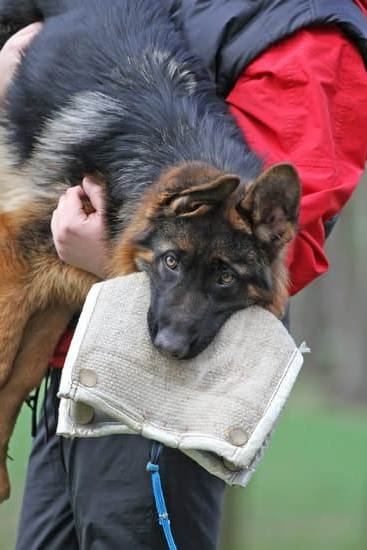Is your dog always begging for food, scavenging for scraps, or even stealing from the counter? This behavior, known as food obsession, can be challenging to manage but with the right approach and training, it is possible to improve your dog’s relationship with food.
In this article, we will explore how to train a food obsessed dog by understanding their behavior and implementing positive reinforcement techniques. By addressing the underlying causes of food obsession and establishing clear boundaries, you can help your furry friend develop a healthier attitude towards food.
Identifying the triggers for food obsession in dogs is the first step towards effective training. By recognizing what stimulates this behavior, such as boredom, anxiety, or lack of structure around mealtimes, you can address these issues and work towards creating a more balanced environment for your pet.
Establishing boundaries and rules around food is crucial in managing a dog’s obsession. Through consistent training and positive reinforcement methods, you can teach your dog when it’s appropriate to eat and how to behave around food.
Positive reinforcement training methods are essential when working with food obsessed dogs. By rewarding desirable behaviors with treats or praise, you can encourage your dog to make better choices around food. Additionally, creating a structured meal schedule and using interactive toys or puzzle feeders can help distract and engage your dog in non-food related activities.
These techniques not only provide mental stimulation for your pet but also help redirect their focus away from obsessive thoughts about food. Remember that consistency and patience are key ingredients when training a food obsessed dog – progress may take time but with dedication and perseverance, you will see improvements in their behavior over time.
Seeking professional help may be necessary for extreme cases of food obsession in dogs. A qualified trainer or animal behaviorist can provide tailored advice and support to address this issue effectively. With the right guidance and commitment from both you and your furry friend, training a food obsessed dog is possible.
Identifying Triggers for Food Obsession in Dogs
Understanding the Root Cause
Food obsession in dogs can stem from a variety of factors, including genetic predisposition, past experiences with food scarcity, or even simply a learned behavior from their human owners. It’s important to understand that food obsession is not necessarily a result of the dog being greedy or disobedient, but rather a complex behavioral issue that requires patience and understanding to address.
Common Triggers for Food Obsession
Some common triggers for food obsession in dogs include inconsistent feeding schedules, feeding scraps from the table, or inadvertently rewarding begging behavior. Additionally, certain medical conditions such as hormonal imbalances or digestive issues can also lead to heightened food obsession. By identifying these triggers, pet owners can take proactive steps to address the issue and train their dogs to have a healthier relationship with food.
Observing Behaviors and Reactions
To identify specific triggers for food obsession in their dogs, pet owners should pay close attention to their pets’ behaviors and reactions during mealtimes. Signs of food obsession can include excessive whining or barking when it’s time to eat, guarding their food aggressively, or constantly seeking out extra treats and snacks. By observing these behaviors closely, pet owners can better understand what may be triggering their dog’s food obsession and take appropriate measures to address it.
Establishing Boundaries and Rules Around Food
When dealing with a food-obsessed dog, it’s crucial to establish clear boundaries and rules around mealtimes and treats. This will help your dog understand that they must wait for their food and not exhibit aggressive or obsessive behavior. To do this, consider implementing the following strategies:
- Create a designated feeding area for your dog, such as a specific corner of the kitchen or a certain spot in the house where they can eat without any distractions.
- Teach your dog to wait for their food by making them sit or stay before you place their bowl on the ground. This will instill patience and discipline in your dog when it comes to mealtime.
- Set specific times for meals and stick to a consistent schedule. Dogs thrive on routine, so having regular mealtimes will help reduce their obsession with food.
- Avoid feeding your dog from the table or giving in to their begging. This only reinforces their food obsession and can lead to negative behavior.
By establishing these boundaries and rules around food, you can effectively manage your dog’s obsession with food and create a healthier relationship with feeding time. Consistency is key, so be sure to enforce these rules every day to see positive results.
Remember that training takes time, so be patient and stay committed to helping your food-obsessed dog overcome their behavior issues. With dedication and the right approach, you can successfully train your dog to have a healthy relationship with food.
Positive Reinforcement Training Methods for Food Obsessed Dogs
When dealing with a food obsessed dog, positive reinforcement training methods can be incredibly effective in redirecting their behavior. By using rewards and encouragement, you can help your dog establish new, healthier habits around food. Here are some positive reinforcement techniques to consider:
1. **Clicker Training**: Clicker training is a popular positive reinforcement method that involves using a clicker device to mark the precise moment when your dog exhibits the desired behavior. This is followed by giving them a treat as a reward.
2. **Obedience Training**: Teaching your food obsessed dog basic commands such as “sit,” “stay,” and “leave it” can help them learn self-control around food. When they follow these commands, reward them with treats and praise.
3. **Desensitization and Counter-Conditioning**: This method involves gradually exposing your dog to triggers for their food obsession while offering rewards for calm behavior. For example, if your dog becomes agitated at the sight of food, start by keeping a small distance between them and the object of their obsession and rewarding them for remaining calm.
It’s important to remember that every dog is different, so finding the right combination of positive reinforcement techniques may require some trial and error. However, with patience and consistency, you can effectively train your food obsessed dog to develop healthier behaviors around food.
Creating a Balanced Meal Schedule for Dogs
Proper nutrition is essential for the overall health and well-being of your dog, especially if they have food obsessed behavior. Creating a balanced meal schedule can help manage their obsession with food and promote healthier eating habits. It’s important to consult with a veterinarian or a professional dog nutritionist to determine the appropriate feeding schedule based on your dog’s age, breed, size, and activity level.
A balanced meal schedule should include the right combination of protein, carbohydrates, fats, vitamins, and minerals to meet your dog’s dietary needs. This may involve feeding them smaller meals more frequently throughout the day, rather than free-feeding or offering unlimited access to food. Scheduled mealtimes can also help establish a routine and structure for your dog, which can be beneficial in managing their food obsession.
In addition to regular meals, it’s crucial to provide fresh water at all times to keep your dog properly hydrated. Proper hydration is vital for digestion and nutrient absorption. By creating a consistent and balanced meal schedule for your dog, you can help reduce their fixation on food and improve their overall behavior and well-being.
| Feeding Time | Amount of Food |
|---|---|
| Morning | 1 cup |
| Afternoon | 1/2 cup |
| Evening | 1 cup |
Using Interactive Toys and Puzzle Feeders to Distract and Engage Food Obsessed Dogs
Food-obsessed behavior in dogs can be a challenging issue to address, but using interactive toys and puzzle feeders can be an effective way to distract and engage food-obsessed dogs. By providing mental stimulation and a challenge while eating, these tools can help redirect your dog’s focus away from the food itself.
Benefits of Interactive Toys and Puzzle Feeders
Interactive toys and puzzle feeders are designed to make mealtime more engaging for dogs. These tools require your dog to work for their food, using problem-solving skills and physical activity to access their meal. Not only does this provide mental stimulation, but it also encourages slower eating, which can be beneficial for dogs prone to gulping down their food.
Using these tools can also help reduce anxiety or frustration around food by giving your dog a positive outlet for their obsession. The act of “hunting” for their food in a toy or feeder can satisfy natural instincts and provide a sense of accomplishment, ultimately leading to a more balanced and fulfilling feeding experience.
Tips for Using Interactive Toys and Puzzle Feeders
When introducing interactive toys and puzzle feeders to your food-obsessed dog, it’s important to start with something simple and gradually increase the level of difficulty as they become more accustomed to the concept. This will prevent frustration and ensure that your dog finds the activity enjoyable rather than stressful.
Additionally, it’s crucial to supervise your dog during their first few attempts with these toys or feeders, providing encouragement and guidance as needed. Over time, most dogs will learn how to use these tools independently, but patience is key during the initial learning process. Remember that the goal is not just about slowing down mealtime but also about offering an enjoyable mental challenge for your dog.
Seeking Professional Help and Training for Extreme Food Obsession in Dogs
While most cases of food obsession in dogs can be managed with consistent training and positive reinforcement, extreme cases may require professional help. If your dog’s food obsession is causing aggression, anxiety, or any other concerning behavior, it is important to seek the guidance of a certified dog trainer or animal behaviorist. These professionals have the expertise and experience to create a personalized training plan for your food obsessed dog.
In extreme cases, underlying issues such as anxiety or trauma may be contributing to the dog’s food obsession. A professional trainer or behaviorist can help identify these root causes and address them through targeted training methods. Additionally, they can provide guidance on managing the dog’s environment to minimize triggers for food obsession and create a balanced and structured meal schedule.
When seeking professional help for extreme food obsession in dogs, it is essential to choose a qualified and experienced professional who uses positive reinforcement-based training methods. Avoid trainers who rely on punitive techniques or forceful interventions, as these can exacerbate the problem and lead to further behavioral issues in your dog.
| Professional Help | Certified Trainer |
|---|---|
| Expertise in creating personalized training plans | Experience addressing underlying issues |
| Guidance on managing environment and meal schedule | Use of positive reinforcement-based methods |
Consistency and Patience
In conclusion, training a food obsessed dog requires patience, consistency and the use of positive reinforcement. Understanding the behavior and triggers, setting boundaries around food, and creating a balanced meal schedule are all important steps in addressing this issue. Using interactive toys and puzzle feeders can help to distract and engage food obsessed dogs while also providing mental stimulation.
Seeking professional help and training may be necessary for extreme cases of food obsession in dogs. It is important to remember that every dog is different, and what works for one may not work for another. Consistency in training methods and patience in addressing the behavior are key to successfully training food obsessed dogs.
By implementing these strategies, owners can effectively manage their dog’s food obsession and improve their overall well-being. It is essential to approach the training process with understanding, empathy, and dedication in order to achieve the best results. With time and effort, it is possible to help a food obsessed dog develop healthier behaviors around food.
Frequently Asked Questions
How Do I Stop My Dog Being Obsessed With Food?
To stop your dog from being obsessed with food, it’s important to establish a consistent feeding schedule and avoid free-feeding. Also, try using puzzle toys or slow feeder bowls to make mealtime more challenging and mentally stimulating for your dog. Providing enough exercise and mental stimulation throughout the day will help shift their focus away from food.
How Do You Train an Overly Food-Motivated Dog?
Training an overly food-motivated dog involves using high-value treats in moderation to reinforce desired behaviors. It’s important to gradually reduce the reliance on food rewards as the dog becomes more responsive to verbal praise or play. Incorporating obedience training and impulse control exercises will also help redirect their attention away from food.
How Do I Stop My Dog From Going Crazy for Food?
If your dog goes crazy for food, consider implementing a structured feeding routine and avoiding leaving any food within their reach when not supervised. Using positive reinforcement training techniques can help them learn self-control around food. Engaging your dog in games, interactive toys, and regular exercise can also help redirect their excessive focus on food towards other activities.

Welcome to the blog! I am a professional dog trainer and have been working with dogs for many years. In this blog, I will be discussing various topics related to dog training, including tips, tricks, and advice. I hope you find this information helpful and informative. Thanks for reading!





